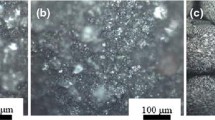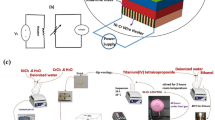Abstract
Experimental excess isotherms for the adsorption of gases in porous solids may be represented by mathematical models that incorporate the total amount of gas within a pore, a quantity which cannot easily be found experimentally but which is important for calculations for many applications, including adsorptive storage. A model that is currently used for hydrogen adsorption in porous solids has been improved to include a more realistic density profile of the gas within the pore, and allows calculation of the total amount of adsorbent. A comparison has been made between different Type I isotherm equations embedded in the model, by examining the quality of the fits to hydrogen isotherms for six different nanoporous materials. A new Type I isotherm equation which has not previously been reported in the literature, the Unilan-b equation, has been derived and has also been included in this comparison study. These results indicate that while some Type I isotherm equations fit certain types of materials better than others, the Tόth equation produces the best overall quality of fit and also provides realistic parameter values when used to analyse hydrogen sorption data for a model carbon adsorbent.








Similar content being viewed by others
Abbreviations
- MOF:
-
Metal–organic framework
- PIM:
-
Polymer of intrinsic microporosity
- m E :
-
Excess mass of hydrogen
- v P :
-
Pore volume
- ρB :
-
Bulk density
- m maxA :
-
Limiting maximum uptake
- θA :
-
Fractional filling
- wt %:
-
Weight percent
- P :
-
Absolute pressure
- b :
-
Affinity parameter
- Q :
-
Enthalpic factor
- b 0 :
-
Pre-exponential factor
- R :
-
Molar gas constant
- T :
-
Absolute temperature
- bdc:
-
Benzene-1,4-dicarboxylate
- MIL:
-
Matériaux de l’Institut Lavoisier
- BET:
-
Brunauer, Emmett and Teller
- m B(A) :
-
Bulk hydrogen within the adsorbate
- m A :
-
Absolute uptake
- m P :
-
Total uptake
- ρA :
-
Adsorbate density
- v A :
-
Adsorbate volume
- M :
-
Molar mass
- Z :
-
Compressibility factor
- NIST:
-
National Institute of Standards and Technology
- b (T) :
-
Tόth affinity parameter
- c (T) :
-
Tόth heterogeneity parameter
- RMSR:
-
Root mean square residual
- b 1 :
-
Minimum value of b in a uniform distribution
- b 2 :
-
Maximum value of b in a uniform distribution
- Q 1 :
-
Minimum value of Q in a uniform distribution
- Q 2 :
-
Maximum value of Q in a uniform distribution
- θ(P,h):
-
Local isotherm
- h :
-
Heterogeneity parameter
- w :
-
Substitution variable
- b (L) :
-
Langmuir affinity parameter
- b (S) :
-
Sips affinity parameter
- m (S) :
-
Sips heterogeneity parameter
- b (GF) :
-
Generalised Freundlich affinity parameter
- q :
-
Generalised Freundlich heterogeneity parameter
- b (JF) :
-
Jovanović–Freundlich affinity parameter
- c (JF) :
-
Jovanović–Freundlich heterogeneity parameter
- α:
-
Dubinin–Astakhov enthalpic factor
- β:
-
Dubinin–Astakhov entropic factor
- m (DA) :
-
Adjustable parameter within the Dubinin–Astakhov equation
- P 0 :
-
Vapour pressure
- GCMC:
-
Grand-canonical Monte Carlo
References
Arrhenius, S.: Uber die Reaktionsgeschwindigkeit bei der Inversion von Rohrzucker durch Säuren. Z. Physik. Chem. 4, 226 (1889)
Bekkum, H.V.: Introduction to Zeolite Science and Practice, vol. 137. Elsevier, Amsterdam (2001)
Bimbo, N., Ting, V.P., Hruzewicz-Kolodziejczyk, A., Mays, T.J.: Analysis of hydrogen storage in nanoporous materials for low carbon energy applications. Faraday Discuss. 151, 59–74 (2011)
Boutin, A., Springuel-Huet, M.-A., Nossov, A., Gédéon, A., Loiseau, T., Volkringer, C., Férey, G., Coudert, F.-X., Fuchs, A.H.: Breathing transitions in MIL-53(Al) metal–organic framework upon xenon adsorption. Angew. Chem. Int. Edit. 48(44), 8314–8317 (2009)
British Standards Institution: Determination of the specific surface area of powders-part 1: BET method of gas adsorption for solids (including porous materials). In: [BS 4359-1, ISO 9277:1995]. British Standards Institution (1996)
Choi, B.-U., Choi, D.-K., Lee, Y.-W., Lee, B.-K., Kim, S.-H.: Adsorption equilibria of methane, ethane, ethylene, nitrogen, and hydrogen onto activated carbon. J. Chem. Eng. Data 48(3), 603–607 (2003)
Czerny, A.M., Bénard, P., Chahine, R.: Adsorption of nitrogen on granular activated carbon: experiment and modeling. Langmuir 21(7), 2871–2875 (2005)
Do, D.D.: Adsorption Analysis: Equilibria and Kinetics, vol. 2. Series on Chemical Engineering. Imperial College Press, London (1998)
Dubinin, M.M.: In: Cadenhead, D.A. (ed.) Progress in Surface and Membrane Science, vol. 9. Academic Press, New York (1975)
Férey, G., Mellot-Draznieks, C., Serre, C., Millange, F., Dutour, J., Surblé, S., Margiolaki, I.: A chromium terephthalate-based solid with unusually large pore volumes and surface area. Science 309(5743), 2040–2042 (2005)
Freundlich, H.: Colloid & Capillary Chemistry. Methuen & Co. Ltd., London (1926)
Gil, A., Trujillano, R., Vicente, M.A., Korili, S.A.: Hydrogen adsorption by microporous materials based on alumina-pillared clays. Int. J. Hydrogen Energy 34(20), 8611–8615 (2009)
Honig, J.M., Reyerson, L.H.: Adsorption of nitrogen, oxygen and argon on rutile at low temperatures; applicability of the concept of surface heterogeneity. J. Phys. Chem. 56(1), 140–144 (1952)
Hruzewicz-Kołodziejczyk, A., Ting, V.P., Bimbo, N., Mays, T.J.: Improving comparability of hydrogen storage capacities of nanoporous materials. Int. J. Hydrogen Energy 37(3), 2728–2736 (2012)
International Energy Agency: World Energy Outlook 2010. In: OECD: Organisation for Economic Co-operation and Development. World Energy Outlook, Paris (2010)
Jagiello, J., Ansón, A., Martínez, M.T.: DFT-based prediction of high-pressure H2 adsorption on porous carbons at ambient temperatures from low-pressure adsorption data measured at 77 K. J. Phys. Chem. B 110(10), 4531–4534 (2006)
James, S.L.: Metal-organic frameworks. Chem. Soc. Rev. 32(5), 276–288 (2003)
Jaroniec, M., Madey, R.: Physical Adsorption on Heterogeneous Solids. Elsevier, Amsterdam (1988)
Jiang, D., Burrows, A.D., Edler, K.J.: Size-controlled synthesis of MIL-101(Cr) nanoparticles with enhanced selectivity for CO2 over N2. Cryst. Eng. Commun. 13(23), 6916–6919 (2011)
Johansson, E., Hjörvarsson, B., Ekström, T., Jacob, M.: Hydrogen in carbon nanostructures. J. Alloy. Compd. 330–332, 670–675 (2002)
Langmuir, I.: The adsorption of gases on plane surfaces of glass, mica and platinum. J. Am. Chem. Soc. 40(9), 1361–1403 (1918)
Leachman, J.W., Jacobsen, R.T., Penoncello, S.G., Lemmon, E.W.: Fundamental equations of state for parahydrogen, normal hydrogen, and orthohydrogen. J. Phys. Chem. Ref. Data 38, 721–728 (2009)
Lin, X., Jia, J., Zhao, X., Thomas, K.M., Blake, A.J., Walker, G.S., Champness, N.R., Hubberstey, P., Schröder, M.: High H2 adsorption by coordination-framework materials. Angew. Chem. Int. Edit. 45(44), 7358–7364 (2006)
Liu, Y., Her, J.-H., Dailly, A., Ramirez-Cuesta, A.J., Neumann, D.A., Brown, C.M.: Reversible structural transition in MIL-53 with large temperature hysteresis. J. Am. Chem. Soc. 130(35), 11813–11818 (2008)
Loiseau, T., Serre, C., Huguenard, C., Fink, G., Taulelle, F., Henry, M., Bataille, T., Férey, G.: A rationale for the large breathing of the porous aluminum terephthalate (MIL-53) upon hydration. Chem. Eur. J. 10(6), 1373–1382 (2004)
Marquardt, D.W.: An algorithm for least-squares estimation of nonlinear parameters. J. Soc. Ind. Appl. Math. 11(2), 431–441 (1963)
McKeown, N.B., Budd, P.M.: Polymers of intrinsic microporosity (PIMs): organic materials for membrane separations, heterogeneous catalysis and hydrogen storage. Chem. Soc. Rev. 35(8), 675–683 (2006)
National Institute of Standards and Technology: NIST Chemistry WebBook. http://webbook.nist.gov/ (2011). Accessed 18/09/2012
Neimark, A.V., Coudert, F.O.-X., Triguero, C., Boutin, A., Fuchs, A.H., Beurroies, I., Denoyel, R.: Structural transitions in MIL-53 (Cr): view from outside and inside. Langmuir 27(8), 4734–4741 (2011)
Park, K.S., Ni, Z., Côté, A.P., Choi, J.Y., Huang, R., Uribe-Romo, F.J., Chae, H.K., O’Keeffe, M., Yaghi, O.M.: Exceptional chemical and thermal stability of zeolitic imidazolate frameworks. Proc. Natl. Acad. Sci. 103(27), 10186–10191 (2006)
Poirier, E., Dailly, A.: Thermodynamic study of the adsorbed hydrogen phase in Cu-based metal-organic frameworks at cryogenic temperatures. Energy Environ. Sci. 2(4), 420–425 (2009)
Poirier, E., Chahine, R., Bénard, P., Lafi, L., Dorval-Douville, G., Chandonia, P.A.: Hydrogen adsorption measurements and modeling on metal-organic frameworks and single-walled carbon nanotubes. Langmuir 22(21), 8784–8789 (2006)
Purewal, J., Liu, D., Sudik, A., Veenstra, M., Yang, J., Maurer, S., Müller, U., Siegel, D.J.: Improved hydrogen storage and thermal conductivity in high-density MOF-5 composites. J. Phys. Chem. C 116(38), 20199–20212 (2012)
Quiñones, I., Guiochon, G.: Derivation and application of a Jovanovic–Freundlich isotherm model for single-component adsorption on heterogeneous surfaces. J. Colloid Interface Sci. 183(1), 57–67 (1996)
Richard, M.A., Bénard, P., Chahine, R.: Gas adsorption process in activated carbon over a wide temperature range above the critical point. Part 1: modified Dubinin–Astakhov model. Adsorption 15(1), 43–51 (2009)
Rouquerol, J., Rouquerol, F., Sing, K.S.W.: Absorption by Powders and Porous Solids. Elsevier, Amsterdam (1998)
Rudzinski, W., Everett, D.H.: Adsorption of Gases on Heterogeneous Surfaces. Academic Press, London (1992)
Schlichtenmayer, M., Hirscher, M.: Nanosponges for hydrogen storage. J. Mater. Chem. 22(20), 10134–10143 (2012)
Serre, C., Bourrelly, S., Vimont, A., Ramsahye, N.A., Maurin, G., Llewellyn, P.L., Daturi, M., Filinchuk, Y., Leynaud, O., Barnes, P., Férey, G.: An explanation for the very large breathing effect of a metal–organic framework during CO2 adsorption. Adv. Mater. 19(17), 2246–2251 (2007)
Silvera, I.F.: The solid molecular hydrogens in the condensed phase: Fundamentals and static properties. Rev. Mod. Phys. 52(2), 393–452 (1980)
Sips, R.: On the structure of a catalyst surface. II. J. Chem. Phys. 18(8), 1024–1026 (1950)
Sips, R.: On the structure of a catalyst surface. J. Chem. Phys. 16, 490–495 (1948)
Ströbel, R., Garche, J., Moseley, P.T., Jörissen, L., Wolf, G.: Hydrogen storage by carbon materials. J. Power Sources 159(2), 781–801 (2006)
Tóth, J.: State equations of the solid-gas interface layers. Acta Chim. Hung. 69, 311 (1971)
U.S. Department of Energy: In: Targets for Onboard Hydrogen Storage Systems for Light-Duty Vehicles, vol. 2012 (2009)
Wang, Q., Johnson, J.K.: Computer simulations of hydrogen adsorption on graphite nanofibers. J. Phys. Chem. B 103(2), 277–281 (1998)
Wilson, M.C., Galwey, A.K.: Compensation effect in heterogeneous catalytic reactions including hydrocarbon formation on clays. Nature 243(5407), 402–404 (1973)
Zhou, L., Yao, J., Wang, Y., Zhou, Y.: Estimation of pore size distribution by CO2 adsorption and its application in physical activation of precursors. Chin. J. Chem. Eng. 8(3), 279–282 (2000)
Zhou, W., Wu, H., Hartman, M.R., Yildirim, T.: Hydrogen and methane adsorption in metal–organic frameworks: a high-pressure volumetric study. J. Phys. Chem. C 111(44), 16131–16137 (2007)
Acknowledgments
JES thanks the UK Engineering and Physical Sciences Research Council (EPSRC) Doctoral Training Centre in Sustainable Chemical Technologies at the University of Bath, and also to Dr Agata Godula-Jopek from the EADS Innovation Works, Munich, Germany for financial support. NB and TJM thank the EPSRC for funding via the SUPERGEN United Kingdom Sustainable Hydrogen Energy Consortium (UK-SHEC, EP/J016454/1), VPT thanks the University of Bath for funding via an EPSRC Development Fund grant and a Prize Research Fellowship, and VPT and TJM thank the EPSRC for supporting the latter stages of this work via its Delivery Fund at the University of Bath and the SUPERGEN Hydrogen and Fuel Cells Hub (EP/E040071/1). JES, NB and VPT thank the Organising Committee of the 8th International Symposium of the Effects of Surface Heterogeneity in Adsorption and Catalysis on Solids (ISSHAC-8, Aug 2012, Kraków, Poland) for the opportunity to present this work as an oral presentation and for subsidising registration for the conference. The authors thank Anne Dailly (Chemical Sciences and Materials Systems Laboratory, General Motors Global Research and Development, Warren, MI, U.S) for providing the NOTT-101 data. ADB and DJ thank the EPSRC for funding (EP/H046305/1).
Author information
Authors and Affiliations
Corresponding author
Electronic supplementary material
Below is the link to the electronic supplementary material.
Rights and permissions
About this article
Cite this article
Sharpe, J.E., Bimbo, N., Ting, V.P. et al. Supercritical hydrogen adsorption in nanostructured solids with hydrogen density variation in pores. Adsorption 19, 643–652 (2013). https://doi.org/10.1007/s10450-013-9487-6
Received:
Accepted:
Published:
Issue Date:
DOI: https://doi.org/10.1007/s10450-013-9487-6




